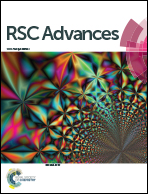Experiment and simulation on Zr2Fe bed for tritium capturing†
Abstract
Zr based alloys are widely used in hydrogen storage and purification systems. For hydrogen isotope capturing and recycling, it is possible to design the tritium extraction system of the glove box taking into account the operating conditions and technical constraints. Zr2Fe alloy bed was adopted in the 2.5%H2/Ar capturing experiments as well as numerical simulation was also constructed. In this work, the breakthrough curve under conditions of 300 °C@200 sccm for the carrier gas penetration was obtained by establishing a single flowing bed. Then a new numerical model of the bed was established for simulating the penetration process, and a numerical solution to the mass conservation equation of carrier gas passing through the bed was obtained concerning the actual experimental parameters. Calculation results have shown the two-dimensional distribution of H2 concentration flowing through a one-dimensional reactor. It can be seen clearly that the H2 concentration distributed along the bed axial at different time. This distribution profiles can be used to globally illuminate the concentration variation of hydrogen in the reactor within the whole reaction time scale. Comparing the experimental result of 1.27 days in the breakthrough curve, the results of numerical simulation can predict the curve of about 1.5 days began to breakthrough, although there were certain deviation (∼18%). The results can provide a feasible numerical model support for optimizing the tritium capturing bed design.



 Please wait while we load your content...
Please wait while we load your content...